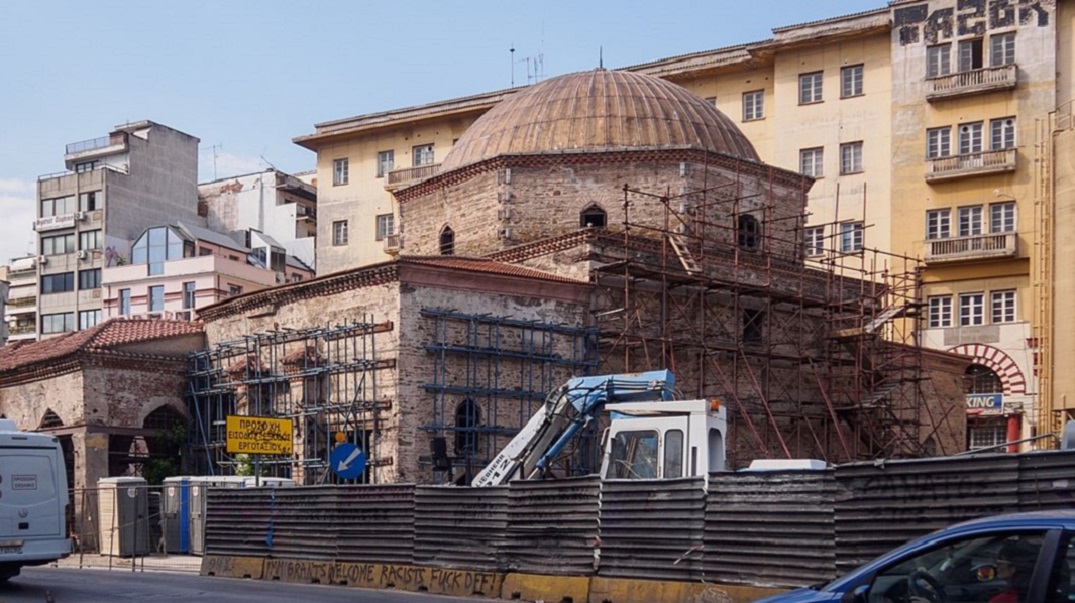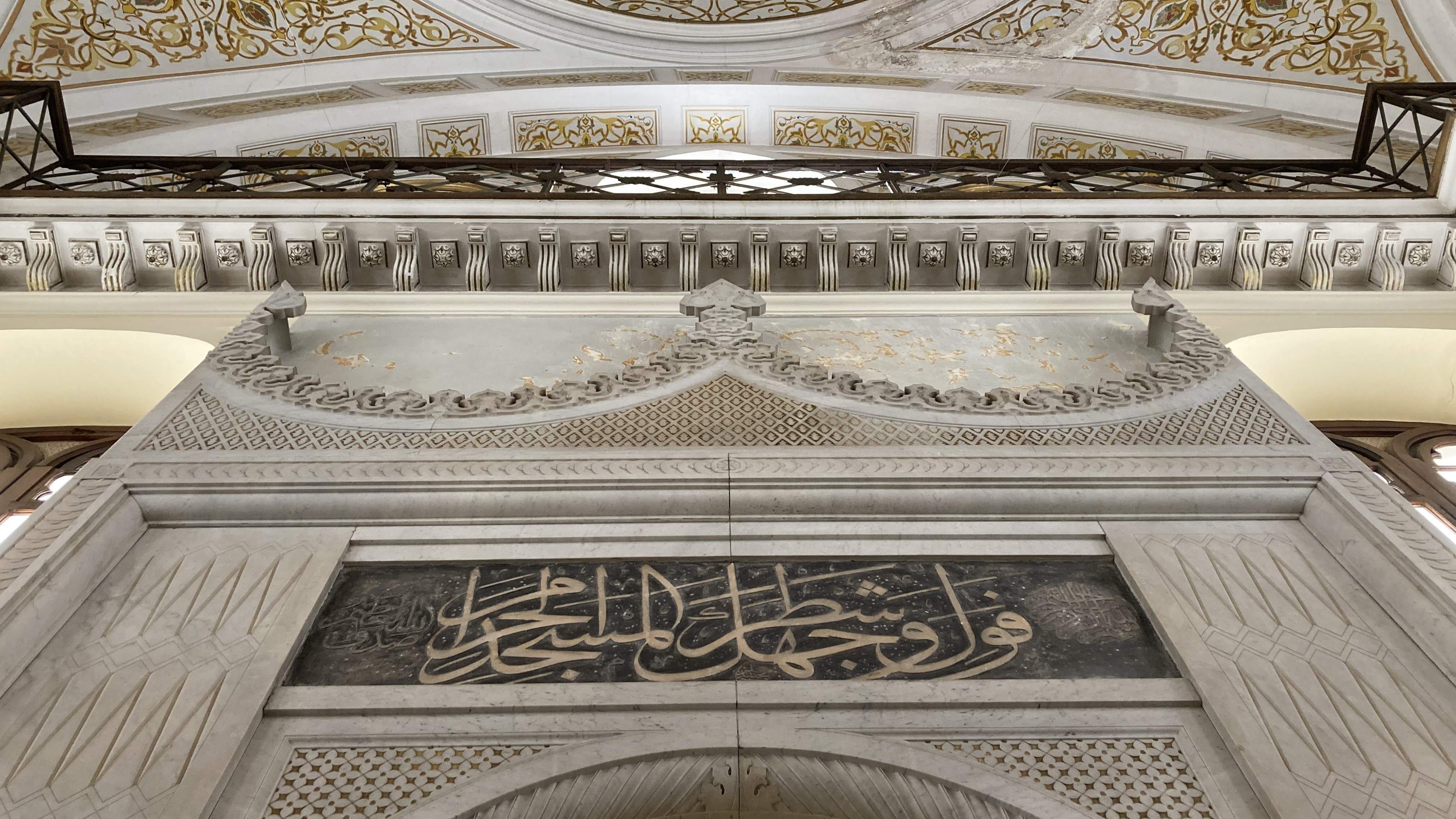In the luxurious Ano Poli neighborhood of Thessaloniki there is a modest fountain, which nevertheless can attract the attention of passers-by.
It is one of the few public monuments in the Greek city to have inscriptions in Arabic and Ottoman Turkish.
Originated from the beginning of the 20th centurye century, the text tells the story of its benefactor, a local mufti named Ibrahim, who had it built in memory of his deceased grandson, Namika Hanim.
The meticulously engraved inscription asks all who drink the water from the fountain to stop and say a prayer for the soul of young Namika.
At the turn of the 20thecentury, fountains were many in Thessaloniki. Such ornate monuments could be found along the winding lanes of Ano Poli, nestled among Ottoman houses characterized by their characteristic overhanging balconies and sumptuous wooden doors.
The countless minarets of the many mosques of Thessaloniki dominated the cityscape and the call to prayer rang through the bustling neighborhoods.
During the Ottoman era, Thessaloniki, known as Salonika, was in many ways a distinctively Ottoman city, having been incorporated into the empire decades before Constantinople.
Its population reflected the diversity of the empire and included Jews, Greeks, Turks, Albanians, Armenians, Bulgarians and many other communities.
Post-Ottoman Hellenization
Throughout the 20the century, Thessaloniki witnessed events that radically transformed its demographic and physical appearance.
Modernization projects from the Ottoman period set the stage for the changes to come, including the demolition of the old Byzantine walls along the waterfront and the construction of a grand promenade in its place.
When the city came under Greek rule in 1912, the desire to Hellenize the built environment shaped urban policy and energized urban planners.
A catastrophic fire in 1917 forced a large-scale reinvention of the city.
The fire destroyed much of the city center, destroying Jewish neighborhoods as well as mosques, synagogues and other monuments.
Although ambitious, the reconstruction efforts largely removed the Jewish and Muslim character of the affected areas.
A few years later, in 1923, the Muslim population of Thessaloniki was subjected to the disastrous population exchange agreement signed by the Greek and Turkish governments.
The overwhelming majority of the local Muslim population, made up of Turks and Albanians among other ethnicities, was forced to leave the city by boat towards the new Turkish republic.
Only a small group of Muslims who agreed to choose foreign (non-Greek) citizenship after the agreement to not be deported were allowed to remain in the city.
Signs of Ottoman influence were removed from the public sphere: mosques were closed and then reassigned to various uses, the city’s minarets were demolished, Islamic cemeteries were destroyed and many Ottoman-era buildings were remodeled in such a way as to give them a more Hellenistic appearance. . .
Ottoman inscriptions were further removed from monuments such as the iconic White Tower and the Hamidiye Fountain.
Traces of the city’s Muslim community were relegated to obscurity.
Restore lost history
The Ottoman structures that survive today are largely abandoned. The city’s four remaining mosques are in various states of preservation.
The largest and most important is the Hamza-Bey Mosque, whose fascinating history dates back more than 500 years.
Originally built in the middle of the 15th centurye century, the mosque is located at a busy intersection in the heart of Thessaloniki’s business district.
For centuries, it was one of the main Muslim places of worship in the area, surrounded by other Ottoman structures such as a covered bazaar and various hamams (public baths).
Like many other structures associated with the Ottomans, it was abandoned during the population change in 1923 and later transformed into a cinema, known locally as Alkazár.
After the population exchange, cinema became extremely popular among Turkish-speaking Greek refugees who arrived from Anatolia during the same wave of migration that uprooted the Muslim community of Thessaloniki.
The cinema served as an ideal venue for showing Turkish language films and was popular with nostalgic Anatolian Greeks.
It was finally closed in the 1990s and access to the mosque has been restricted ever since.
More recently, the construction of a nearby subway station has led to the erection of barriers and scaffolding that obstruct the view of the structure.
In May 2023, the Greek Ministry of Culture and Sports announced that the Hamza-Bey Mosque would be fully restored and reopened as a museum in 2025, as part of a multi-million euro investment project.
The museum will house the various artifacts discovered during the construction of the subway.
The restoration of the Hamza-Bey Mosque represents an important step in local politics towards the Islamic and Ottoman heritage of Thessaloniki.
Discussions about how and why the city should restore and strengthen its Ottoman heritage were virtually non-existent until 2011, when the election of Yiánnis Boutáris as mayor of Thessaloniki ushered in new debates about promoting the city as a historically cosmopolitan metropolis.
Boutáris, who campaigned on a progressive platform, consistently advocated for full inclusion of the city’s Islamic and Ottoman sites.
The mayor argued that restoring such sites would benefit Thessaloniki on several levels, including attracting tourists, forging stronger relations with the Muslim world and promoting the city’s varied history.
After coming to power, Boutáris implemented his inclusive program: he proposed the creation of a museum of Islamic art in the abandoned Ishak-Pasha Mosque (Alaca İmaret), and allowed local Muslims to perform Eid prayers for the first time in decades at the iconic . Yeni Camii Mosque.
A number of factors, including the economic crisis that shook the country and lack of cooperation at the government level, prevented the full implementation of the mayor’s proposals.
Boutáris’ courageous attitude and progressive policies, however, provoked a backlash from fascists and ultra-nationalists, who attacked the then 75-year-old in 2018.
However, the mayor’s ambitious and inclusive vision for Thessaloniki will likely continue to inspire future policy makers and heritage activists to highlight places evocative of the city’s Islamic past.
From the Namika Hanim Fountain to the Hamza Bey Mosque, the Ottoman and Islamic sites and monuments of Thessaloniki tell one of the most fascinating chapters in the history of the city.
In addition to honoring Boutáris’ vision, promoting that history and highlighting the cultural wealth of Thessaloniki would increase its tourist appeal and serve as a model for other cities and towns in Greece and the Balkans.



